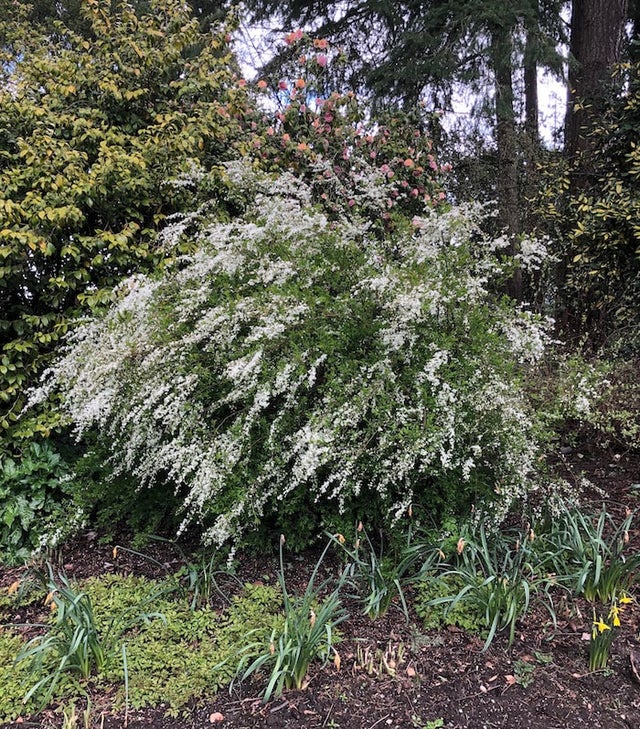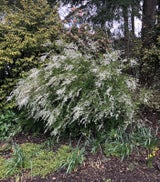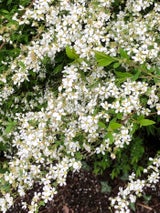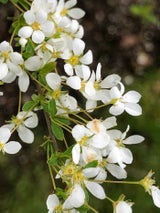- Plant IDs
- >
- ID By Type
- >
- Shrubs
- >
- Spiraea thunbergii
Spiraea thunbergii
Common name: Bridalwreath, Thunberg's spirea
Spiraea thunbergii, a hardy, semi-deciduous shrub with a graceful habit, belongs to the Rose family (Rosaceae). It is native to southeast China, but was introduced from Japan. Its Japanese name is 'Yuki-yanagi' or'Snow-Willow'. (The flowers are white like snow, and the leaves are willow-like.)
S. thunbergii is usually the first of the spiraeas to bloom. In April, dainty, pure white, five-petaled flowers appear on wiry, outward arching branches. Pollinating insects such as bees and butterflies find the shrub very attractive. S. thunbergii has slender, bright green leaves with finely serrated margins. The leaves are slow to fall in the autumn, and some may remain on the branches throughout the winter. S. thunbergii flowers on the previous summer's growth so any pruning should be done immediately after flowering.
S. thunbergii was 'discovered' in Japan by Philipp Franz von Siebold, a German doctor and plant collector who introduced western medicine to Japan. The genus name is from the Greek word 'speira' meaning a 'wreath'. The specific epithet honours Carl Peter Thunberg, a Swedish botanist and plant explorer who introduced this plant to Europe.
Several examples of Spiraea thunbergii are located in Bed 3 near the Oak Street side of the Floral Hall.
Text and photos by Kumi Sutcliffe






